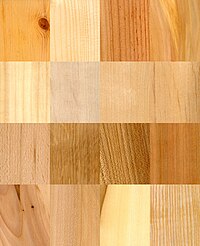
Photo from wikipedia
The discoloration and resistance to subterranean termite attack of four furfurylated fast-growing tropical wood species were evaluated after outdoor exposure for 1 year in Bogor, Indonesia. For comparison purposes, imidacloprid-preserved… Click to show full abstract
The discoloration and resistance to subterranean termite attack of four furfurylated fast-growing tropical wood species were evaluated after outdoor exposure for 1 year in Bogor, Indonesia. For comparison purposes, imidacloprid-preserved and untreated wood samples were also prepared. Discoloration of all treated samples was measured before and after the furfurylation process. The wood specimens were then placed vertically to three-fourths of their length in the ground for 1 year, at which point they were evaluated for resistance to subterranean termite attack. After furfurylation, wood samples were darker in color than untreated wood, while imidacloprid-preserved wood was lighter. After 1-year exposure, furfurylated wood samples appeared to have the highest resistance to subterranean termite attack. These samples had minimal weight loss, indicating a substantial protection level. Imidacloprid-preserved wood had less resistance to termite attack, but was more resistant than untreated wood.
Journal Title: Forests
Year Published: 2021
Link to full text (if available)
Share on Social Media: Sign Up to like & get
recommendations!